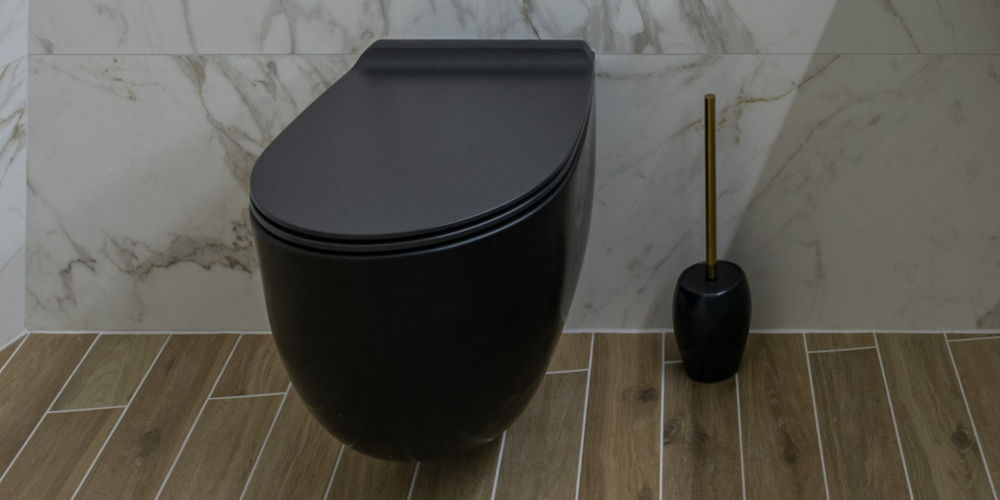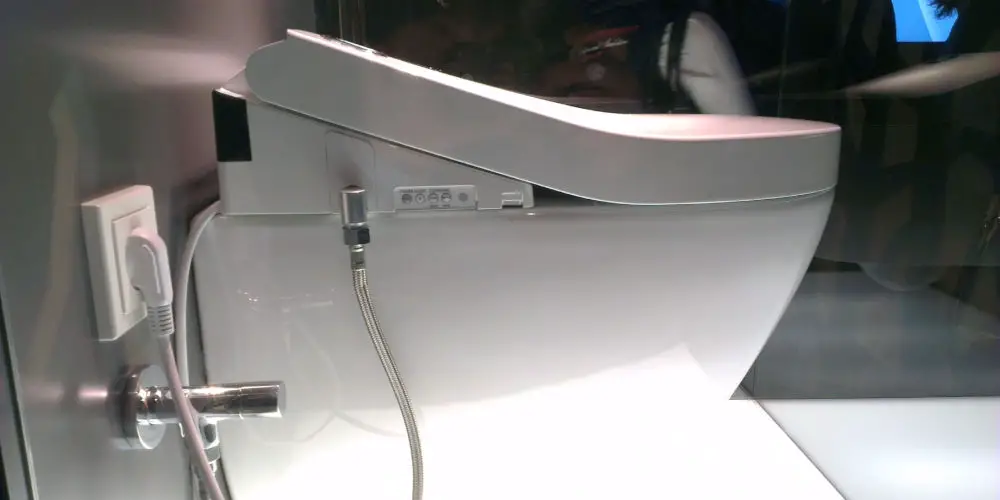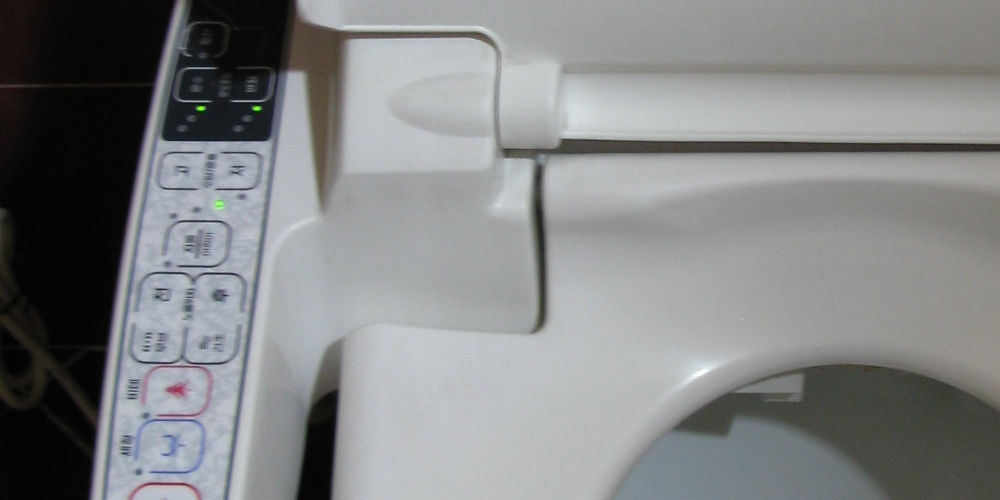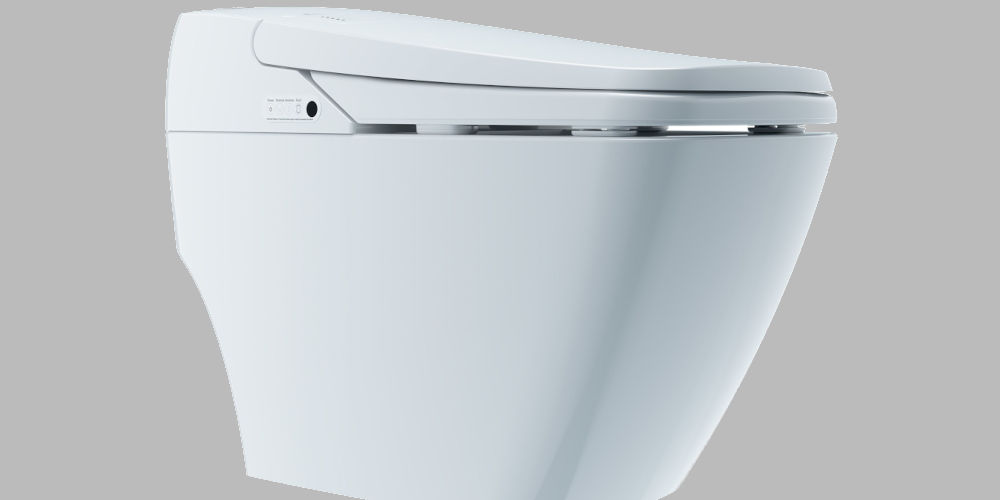What is a smart toilet and are they worth the flush?!

If you’ve been browsing for a new toilet, you might have stumbled upon smart toilets. What started as a crazy Japanese invention is now becoming quite popular in UK homes. But what is a smart toilet? Are they worth the premium price?
As the latest bathroom trend, you might have seen a Toto smart toilet or one of the many Geberit models; and found the whole idea intriguing. That is until you view the price tag! These smart loos can range from £1,000 to well over £10,000!
The topic of toilet technology is fascinating and one that seems futuristic. However, with more smart toilet models available than ever, it’s a topic worth exploring. You might also want to consider if your home is ready for this smart appliance.
The modern toilet, as we know it, dates back to 1596 when Sir John Harrington created a flushing lavatory with a built-in cistern. While the idea was far better than digging a hole before reliving yourself, it was a smelly affair.
Queen Victoria insisted the toilets were plumbed in at the other end of the corridor to the drawing room in Buckingham Palace to prevent the awful smells from travelling. The royal staff spent their lives spreading scents to mask the repugnant loo smells.
It wasn’t until the 70s that we started building toilets inside. Many of our parents grew up with an external loo! Thanks to developments in sanitary conditions, we no longer need to deal with such nauseating smells.
By the late 1980s, smart toilets started to gain popularity in Japan. To us Brits, they were a novelty and more of a party trick than a serious home upgrade!
In 2011, Kohler released the Numi with an eye-watering price tag of $6,400. As the world’s first smart toilet, the Numi allows users to change the ambient lighting, adjust the water temperature, and even use the built-in radio to listen to music.
Since then, we’ve seen many toilet innovations. The TOTO Neorest 700H cleans your body; itself and freshens the air. When using the KOHLER Veil bidet, you can easily adjust the water temperature and pressure. The Ove Decors Tuva allows you to adjust the seat temperature.

What is a smart toilet?
The term smart toilet is slightly misleading as the toilet element isn’t smart. However, the toilet seat can incorporate a range of technology that creates a much more enjoyable experience for the user.
The concept of the smart toilet seat, or bidet seat as it’s often known, originated in Japan. Many of us, especially in the beginning, find the whole idea rather novel. Yet the Japanese have been using bidet-style smart toilet seats for many years.
Many consider them the most hygienic way to clean after using the toilet as they shoot jets of water towards you ensuring your private area is clean without needing to wipe.
What features do smart toilet seats provide?
The average smart toilet seat is packed full of features. They even come with a remote control. Let’s start by covering some of the main features available:
Heated seat
No one wants to use a cold toilet seat on a frosty winter’s morning. Thankfully, many smart toilet seats are heated, making mornings and winter a little easier.
Night light
If you occasionally need to relieve yourself in the middle of the night, you might fumble your way to the bathroom or potentially wake the house by turning on a light. Plus, you might find it hard to fall back asleep after seeing a bright light.
Some smart toilet seats come with a night light built-in, enabling you to make it to the toilet without needing to turn on any other light.
Front and rear cleanse mode
In addition to the standard rear cleanse, bidet seats also offer a front cleanse. Using the remote, you can adjust a plethora of options, including the nozzle positions, the water temperature and the water pressure.
Air dryer
After using the cleaning function, you’ll be a little wet. So, it’s only natural to want to dry yourself. Simply, hit the dryer function button on the remote, and you’ll feel hot air rise up around your sensitive areas. Again, this function is highly adjustable with multiple temperature levels.
Deodoriser
If you hate needing to open and close windows (and the door), you’ll be happy to know all smart loos have a deodoriser that keeps your bathroom smelling fresh after every use.
Automated cleaning functions
No one enjoys scrubbing their toilet. Thankfully, bidet seats have automated cleaning functions.
Energy-saving mode
When not in use, your smart toilet seat has an energy-saving mode, ensuring you only use power when required.

What benefits do smart bidet toilets provide?
Eco-friendly
Traditional toilets flush the same amount of water, regardless of the activity. A smart bidet toilet only uses the exact amount of water required to flush the unit clean. By adapting to the situation, it uses far less water overall.
Thanks to the water and air dryer features there’s no need for toilet paper. Granted, they do use electricity. However, some models have energy-saving modes that keep your energy consumption to a minimum.
Improved accessibility
These toilet seats are extremely easy to use, making them ideal for the elderly or people with disabilities. Some models have a kids’ function, which reduces the pressure of the flushing and cleaning cycles.
Better hygienic
As they automatically flush, you don’t need to touch a button when you’re finished. Some smart toilets include self-cleaning functions, removing the need for you to spend time scrubbing.
Space-saving
All-in-one smart toilets are far more compact than regular toilets, making them ideal for those with smaller bathrooms, and yet they still look stylish and modern.
Are there any downsides to smart toilets?
While there are many benefits to owning a smart toilet, they do have some downsides.
Cost
If you’ve looked at the price of a smart bidet or toilet seat, you might feel like you’re flushing money down the drain (sorry!). And while some units cost thousands of pounds, the typical standard models cost an average of £350.
Ease of use
Depending on the number of features your smart toilet offers, it might take your household a while to learn how to use it properly.
Electricity usage
You may never have to buy another roll of loo paper, but what you save in that department may offset the additional money you spend on electricity. They only use a tiny amount of electricity every time. However, this can quickly add up and push your electricity bill up.
Repairs
As with any technology, a smart toilet will require specific repairs and maintenance as needed, which can be very costly. You might also find it hard to find a local plumber who can fix your unit.

Should you install a smart toilet in your bathroom?
If you want to upgrade to the latest toilet tech or save water or space, a smart toilet might be worth buying. However, they are costly and might be difficult to repair. So, if you’re on a tight budget, it might be best to skip buying one.
What next for smart bidets and toilets?
Many bathroom experts believed smart toilets to be a fad or an interesting talking point for the well-heeled. Only a few foresaw them becoming as popular as they have. So, it’s hard to predict what’s next for smart bidets and toilets.
That said, as more of us in the UK embrace smart home technology, it’s not that farfetched to believe that we will see more smart toilet models available. And hopefully with more competitive prices.
Only time will tell what functions they will offer and how innovative these will be. We might even see several Bluetooth toilet seats appear on the market. You’ll find all the latest developments here.




